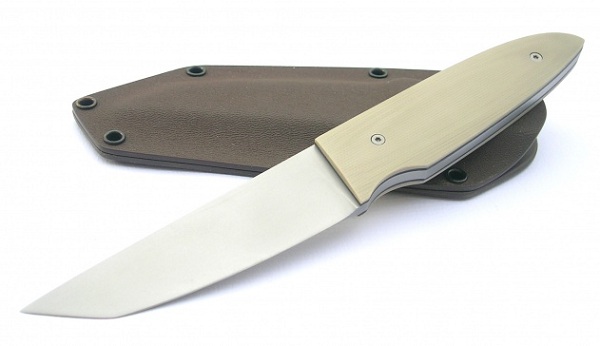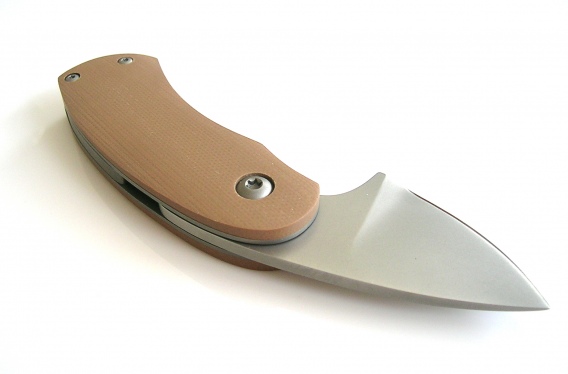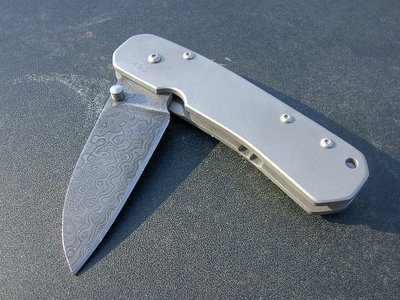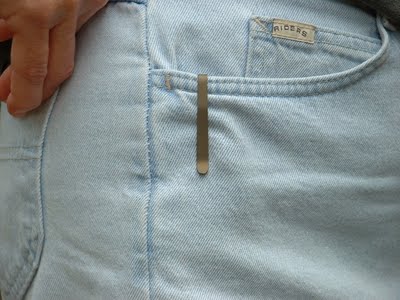This article is part of a series of interviews I am conducting with with custom knifemakers and craftsmen. I will be exploring the world of custom knives and the people who make them. If you or someone you know would be interested in being interviewed by BladeReviews please contact me.
Filip De Coene is a custom knifemaker from Belgium whose simple designs are modern and elegant. He seems to distill knifemaking to it’s purest form and his work is a very interesting departure from the custom knives that I usually encounter.
His website is filled with beautiful pictures of his work as well detailed tutorials discussing how he makes many of his knives. It is with great pleasure that I welcome Filip De Coene to BladeReviews.com.

Welcome Filip, it’s an honor to have you here. Please tell us what got you into knifemaking.
I started making knives in the late 90’s. In that time I had a nice collection of production knives, largely Spyderco folders. I couldn’t find the ideal edc folder and had plans for some modifications on a smaller folder. First I made several drawings, tried some adjustments and finally I came to the conclusion to start making my own knives.
Your knives strike me as incredibly unique. They have such a clean and minimalistic appearance. What is your source of inspiration?
I certainly follow the philosophy “less is more.” A clean design with simple construction emphasizes the basic function of a knife. Adding more materials or parts often seems to be easier but ultimately, simplicity has more advantages. The user needs little or no explanation as to how the knife works, and there is a trust from the first contact. Difficult or unknown mechanisms also demands more maintenance, and have more chance for failure.

In knifemaking there no real limits, in the “knife world” there is a lot of innovation but in my experience a clean knife design has more chances to get that timeless appearance. Imagine the friction folding knife, it’s the oldest folder and still lots of people are attracted to this idea .
I believe in the safety and the ergonomics of a knife design instead of fashion or looks. I invest time and effort in the anatomy of my new knives to improve the comfort and usability.
I think that is a great outlook on knifemaking, and it’s something I personally, can really get behind. To continue with that theme I noticed that you don’t put any logos on your knifes
I prefer a logo at the inside of the knife or no logo at all. A logo on the blade can be distracting, mostly those are too big or at the wrong area.

In the future I think about a small hand-etched signature on the spine of the blade, that’s probably the most attractive .
I have to admit, the lack of logos is a refreshing look and it stays true to your “less is more” philosophy. Your knives are not only beautiful, but they appear very functional. What is your philosophy towards using your knives?
Each design has his application and limits. I can only recommend people to use each knife in a correct manner. Most of my handmade knives are intended for daily cutting tasks. I will try to comment the purpose of each knife on my website.
I know that you were thinking about writing a book about knifemaking, are you still working on that?
Yes, I am collecting all drawings and information to write a tutorial book . This book is meant to explain the whole process of knifemaking from sketch to finished knife. It will be a well documented story to make people aware about the effort, time and exercise is needed to create a custom knife.

I know a lot of people will be very interested in reading that book. A saw that your have a new section on your website for designs in 2011, but it is still under construction. Tell us about your plans for 2011.
The “hybrid” describes a modern styled folder based on the “mini”. Initially a friction folder but a locking mechanism is possible. The minimum knives are a replacement for kitchen knives, fixed or folding and are featuring a sheep’s foot blade style.

The “ICE”, stands for “In Case of Emergency” and acts like a rescue/safety knives. It should be legal everywhere and anytime.
The “SER” stands for ” Survival-Emergency-Rescue. These are really in the first stage of development
Nice, I’ll certainly be keeping my eye out for these new models. What would you say to any aspiring knifemakers out there?
Be patient, making knives demands lot’s of practice and knowledge. Most obvious is to buy a favorite, less expensive knife and use it as template. It could be a good way to start, exploring new designs and creating your own style comes later after lot’s of experience. Knifemaking has it’s advantage, it’s a way to explore new techniques and improve your skills.

Are any of your knives for sale? How would someone go about purchasing one?
I am working on new knife designs with the ambition to encounter some good products in knife industry. Soon new knives will be published, most of the knives will be presented at local knifeshows.
What knife are you currently carrying?
Soon I will finish some safety tools and try their application on daily base. For the moment I don’t carry a knife.
Apart from pocket knives also other blades or cutting tools can be pleasant to use. I regularly enjoy kitchen knives too.

Thanks for your time Filip, is there anything else you would like to say?
A knife is one of the oldest tools in history , used for many reasons. I am defending the practical character of knives.
Let it be a tool instead of a weapon unless you’re in real emergency.
I totally agree. Thanks again, and all the best in 2011.

To learn more about Filip and his knives, check out his website, CustomBladeWorks.com.







